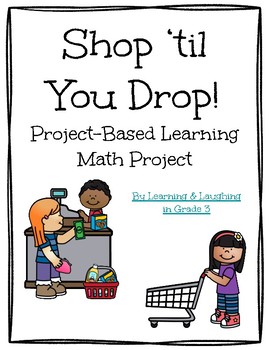Shop 'til You Drop: A Money, Graphing & More Project-Based Learning Math Project
- PDF
Description
Shop 'til You Drop is a project-based learning math project that incorporates a wide array of standards in one cumulative project that my students always love! Students learn the basics of entrepreneurship as they choose business partners and work together to develop their own "store"! After a "class store" day where students can "purchase" items from their classmates' stores, students use their sales records to create graphs displaying their sales data!
Included in the file:
-Action Plan checklist
-Business Plan
-Store logo design sheet
-Items & Price list
-Store Map (2 copies- one with gridlines to incorporate area & perimeter)
-Advertising poster design sheet
-Sales record sheet
-Sales data graph sheets (2 included- students can create a bar or pie graph)
-$1 bills, $5 bills, and checks for class store (color and B&W copies included)





